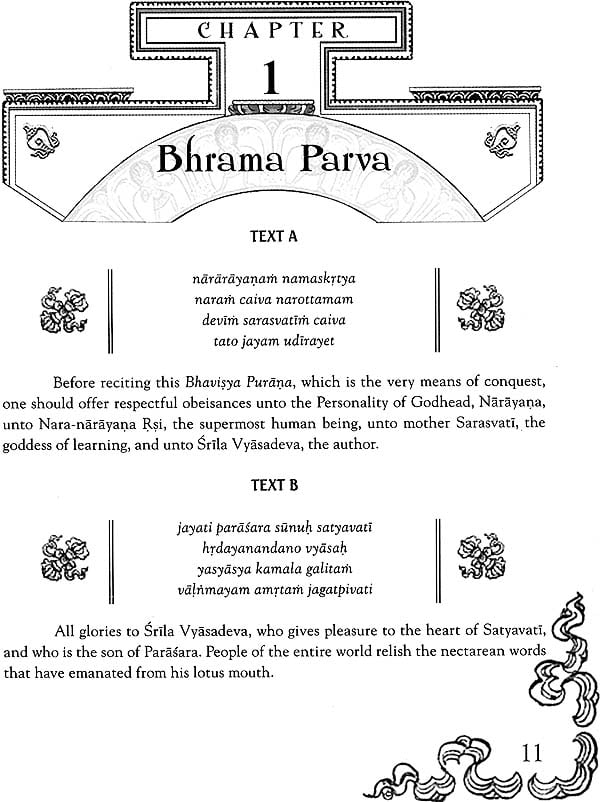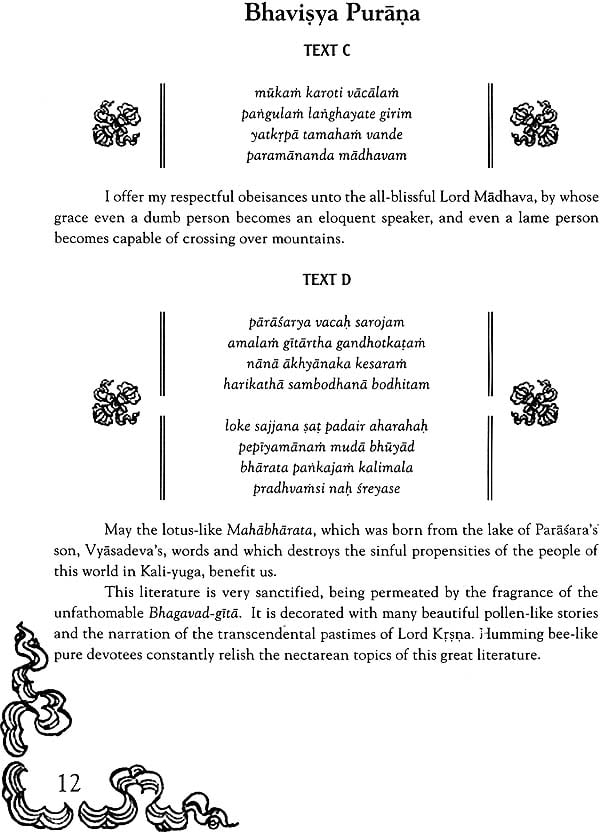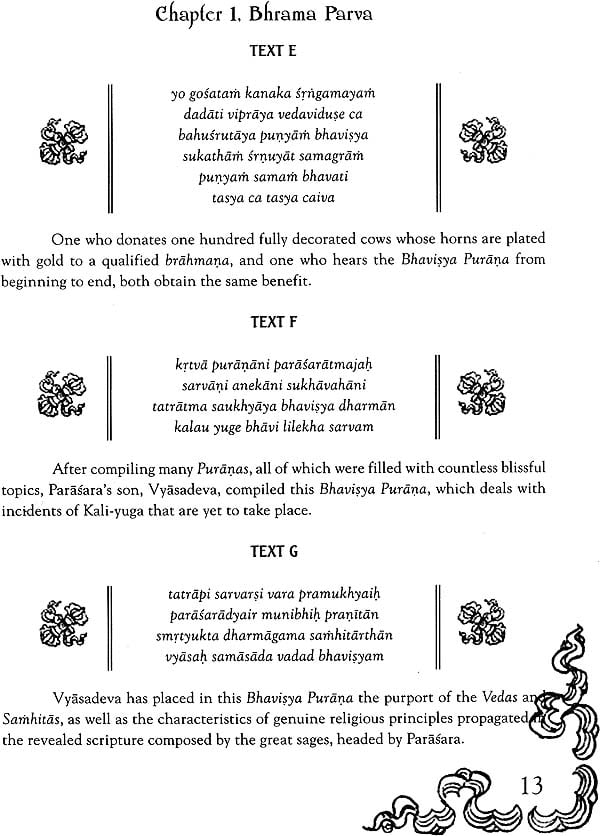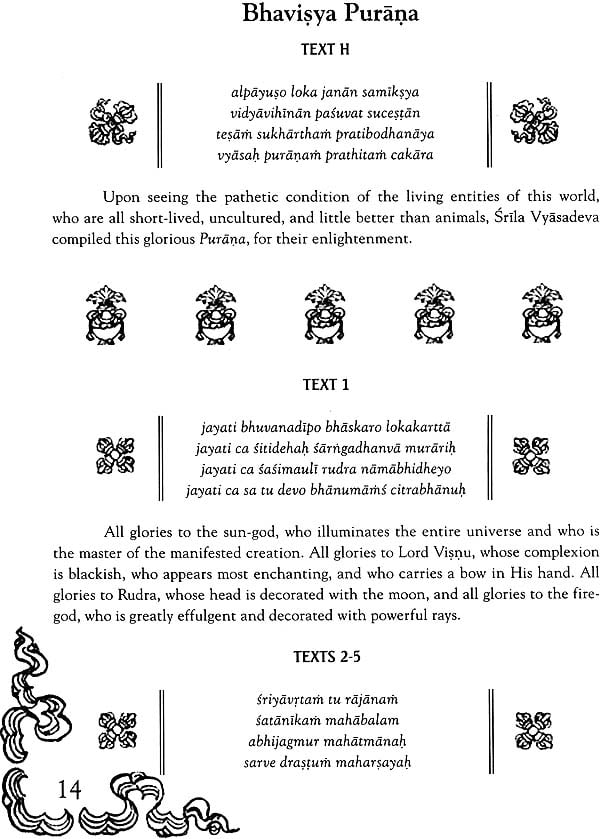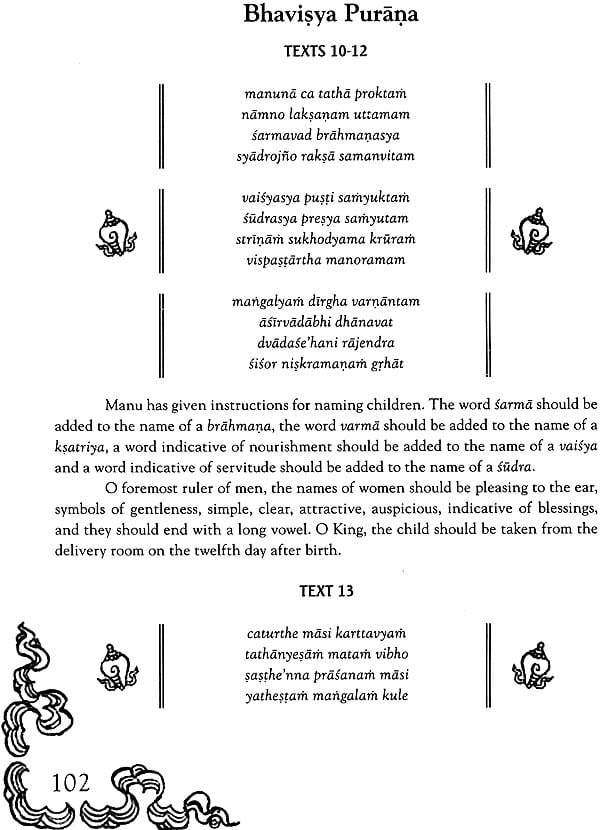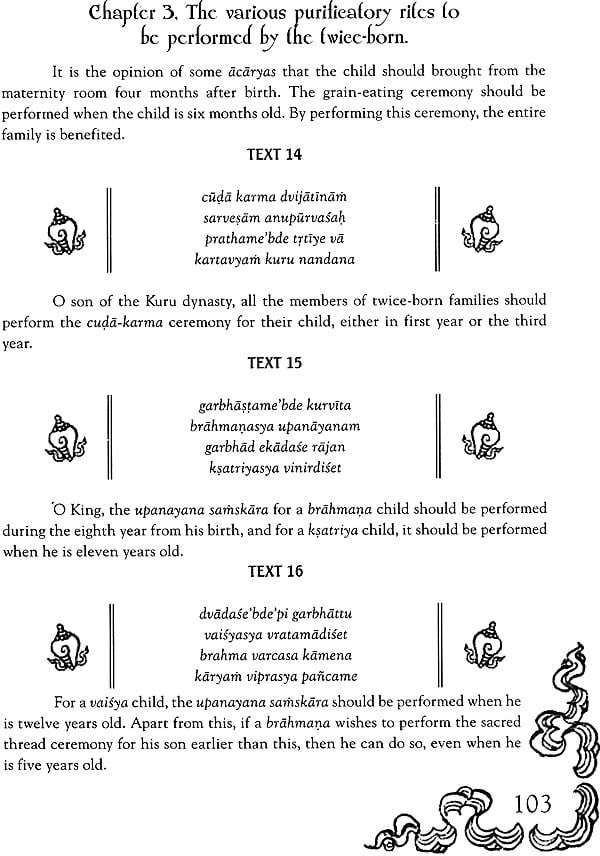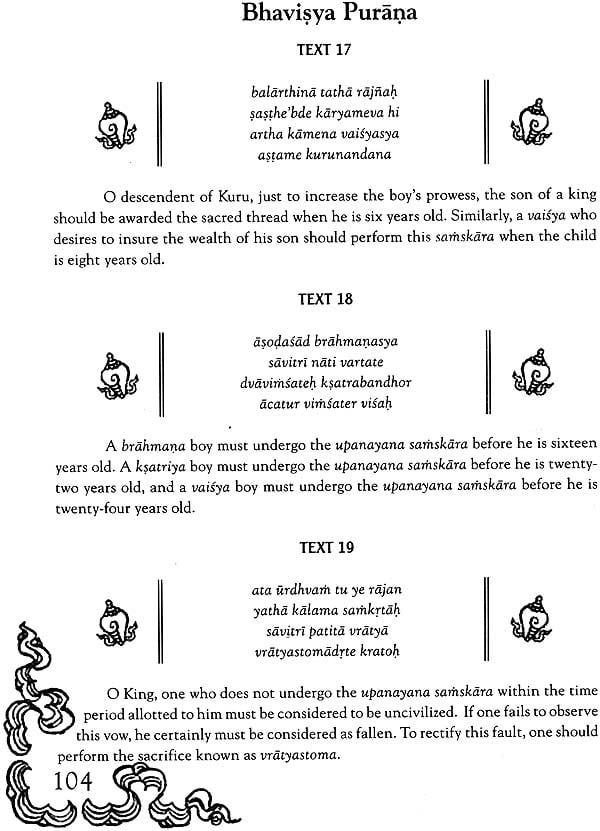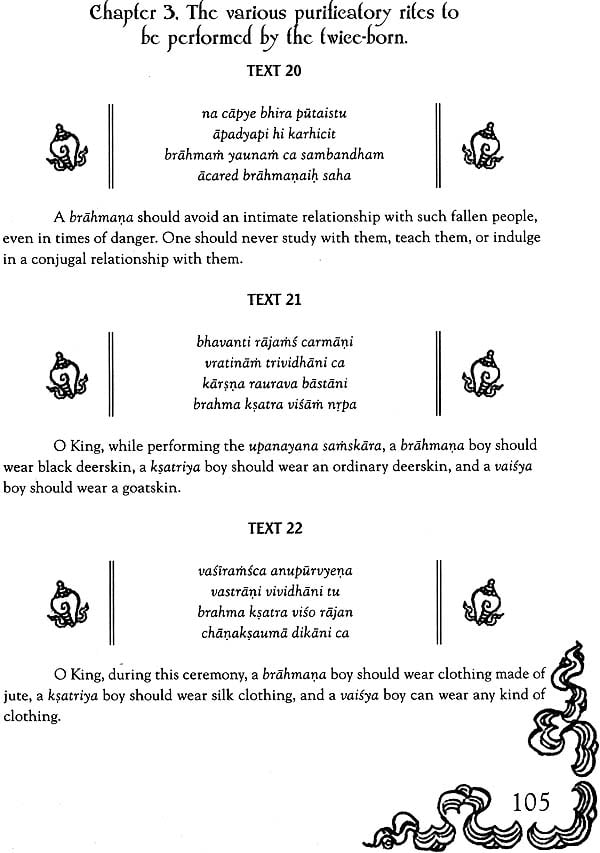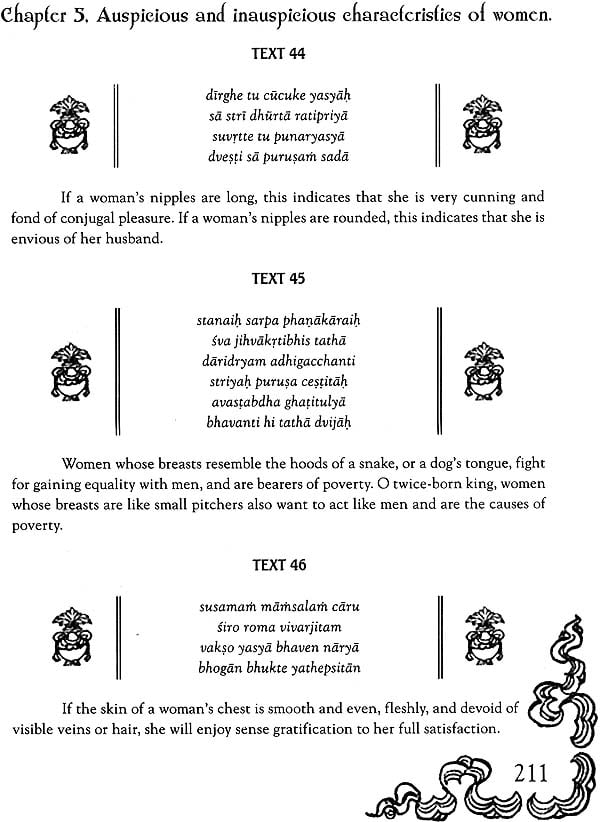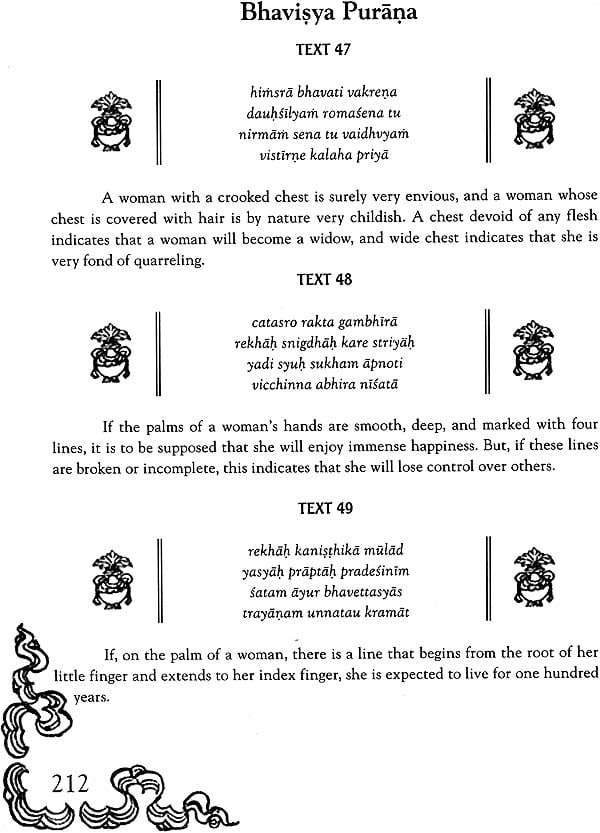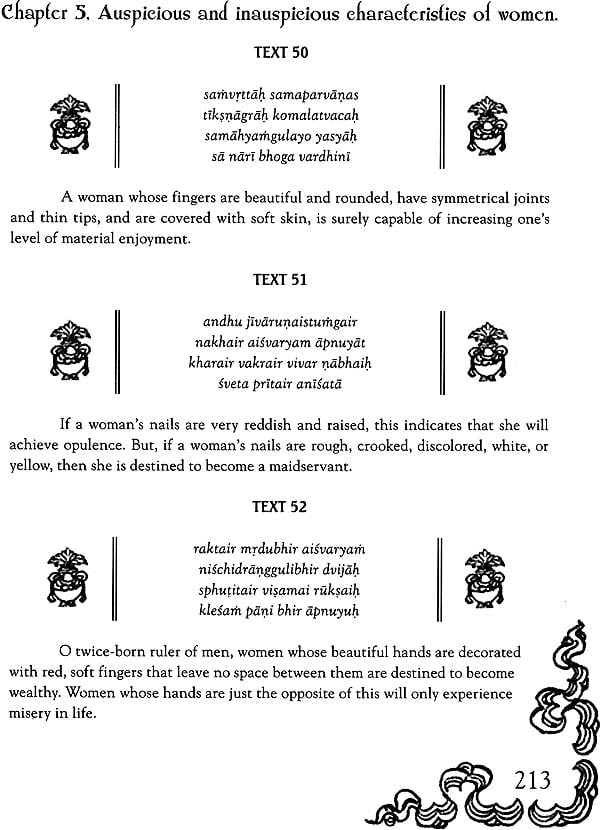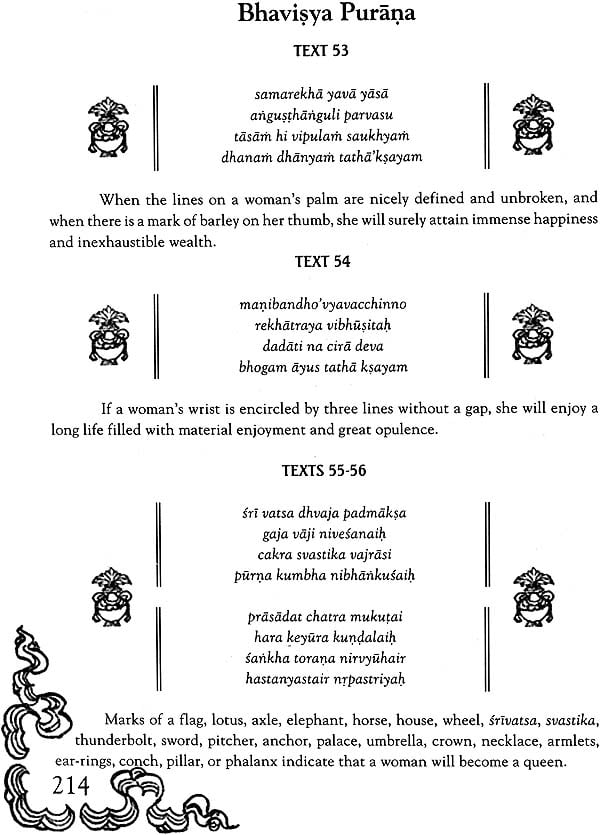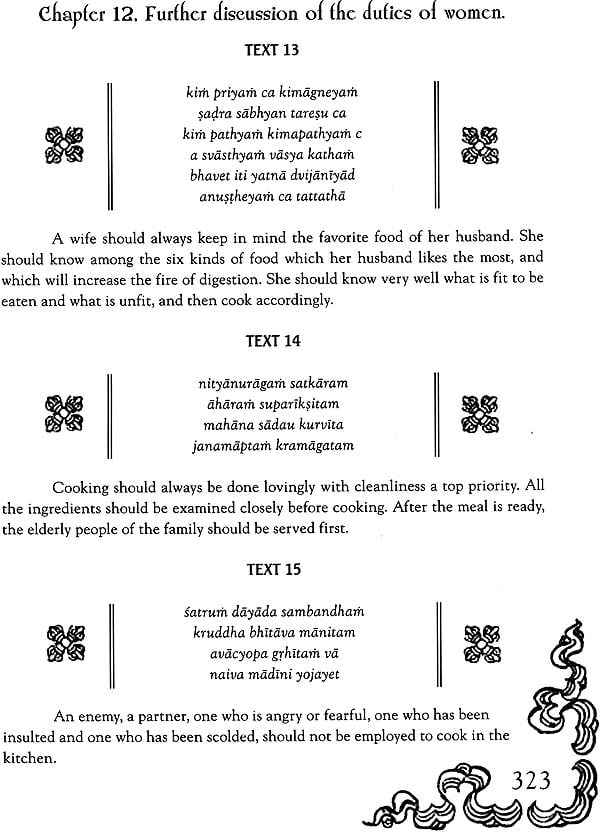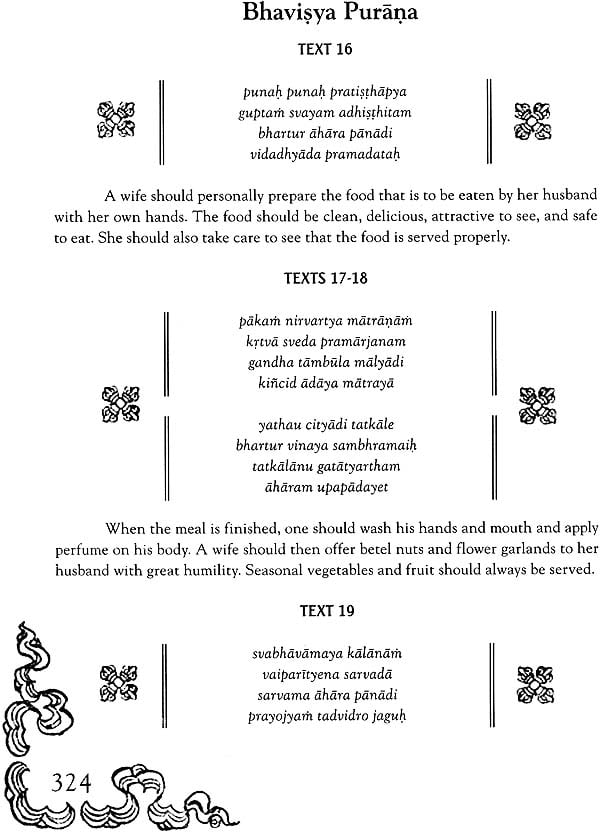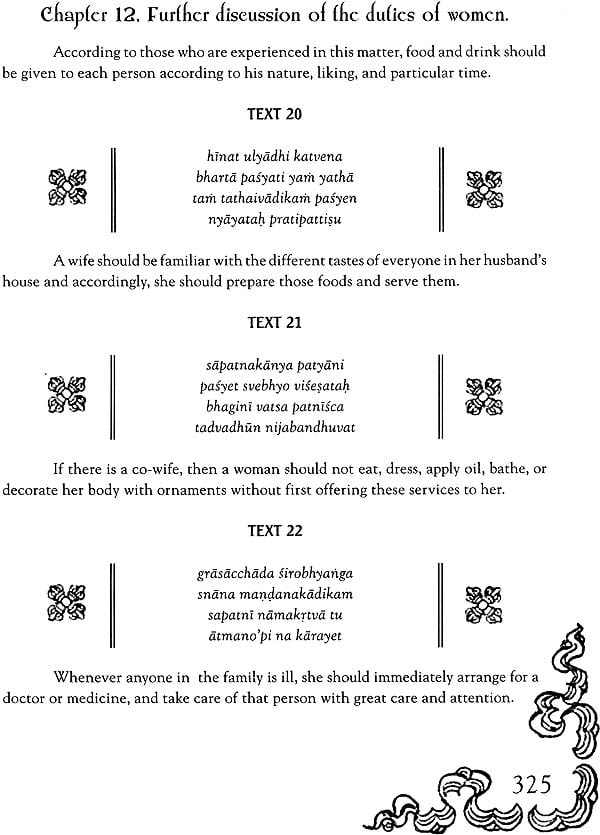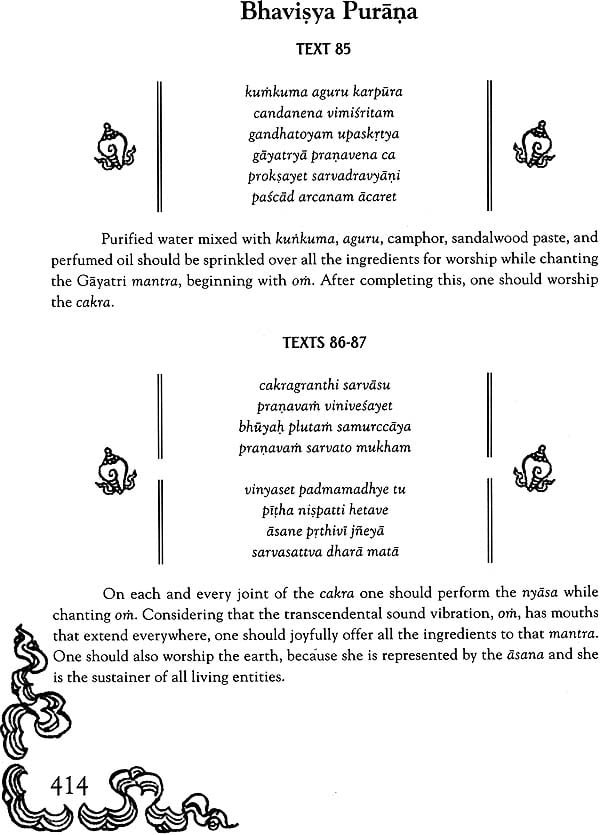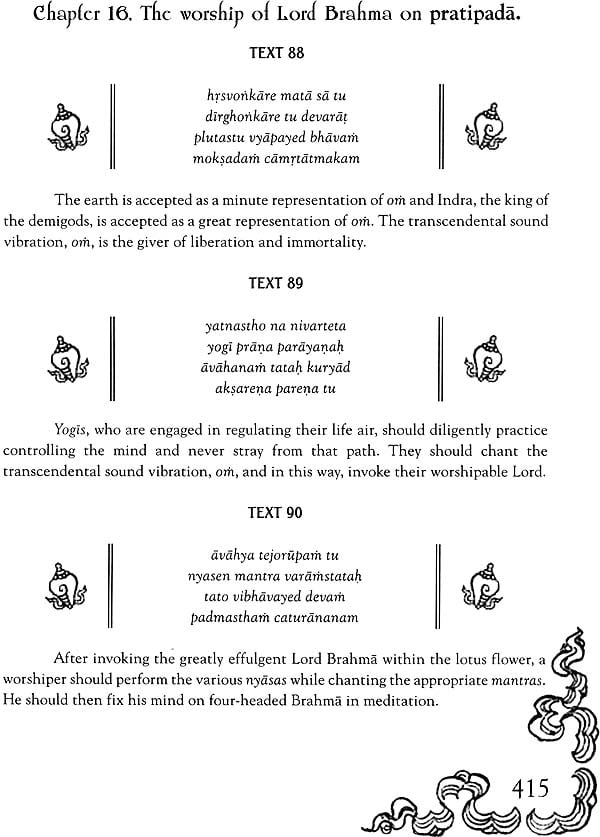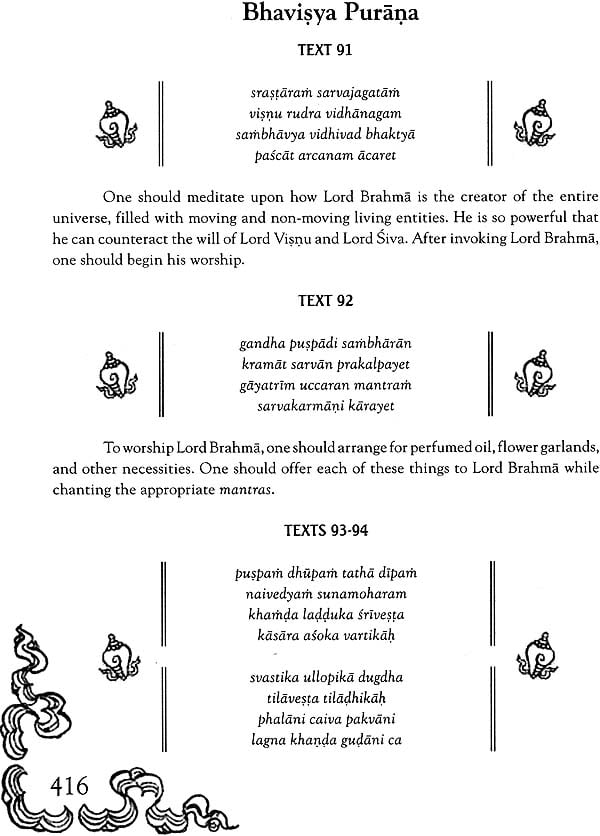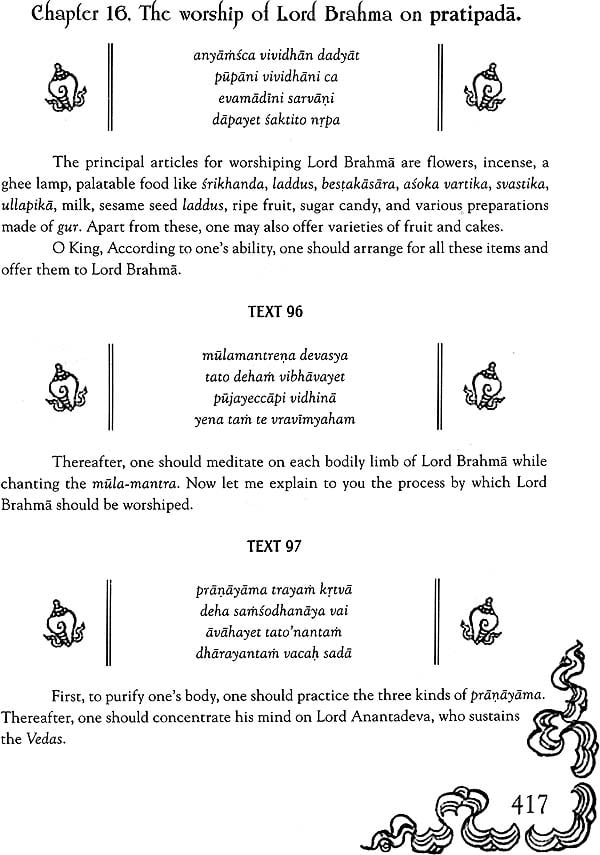
Bhavishya Purana (Volume I)
Book Specification
| Item Code: | IDJ643 |
| Author: | Purnaprajna Dasa |
| Publisher: | RAS BIHARI LAL AND SONS |
| Language: | Transliterated Text with English Translation |
| Edition: | 2007 |
| ISBN: | 8184030150 |
| Pages: | 516 |
| Cover: | Hardcover |
| Other Details | 9.5" X 7.2" |
| Weight | 1.12 kg |
Book Description
The Bhavisya Purana is one of the eighteen major Puranas. The specific appeal of this Purana, is that it narrates incidents that will occur in the future, as well as accounts-that happened in the distant past.
In this first volume of Bhavisva Purana, there are no future predictions, but as in all the Puranas, there is much of great interest. In this volume there is an elaborate exposition of the auspicious and inauspicious characteristics of men and women, and in the course of this description, there is much information on Vedic physiognomy.
This volume also contains the beginning of an elaborate description of the significance of each of the days of the fortnight, beginning with the first, or pratipada. And, of course, there are stories to illustrate whatever is being explained and in this volume, there is the very interesting story of how Lord Brahrna's fifth head was severed, and for what reason.
The Vedic understanding is that the gross body of a living entity is manifested according to the condition of the subtle body, or mind.
Thus, the condition of one's gross body indicates the previous mentality of a person, and this process is carried on from one moment to the next. Why does someone have particular bodily features, and what do they indicate?
This is the subtle science that is explained in this volume of the Bhavisya Purana.
Introduction
The Bhavisya Purana is one of the eighteen major Puranas, as stated in the text of Srimad-Bhagavatam (12.7.23-24): The eighteen major Puranas are the Brahma, Padma, Visnu, Siva, Linga, Garuda, Narada, Bhagavata, Agni, Skanda, Bhavisya, Brahma-vaivarta, Markandeya, Vamana, Varaha, Matsya, Kurma and Brahmanda Puranas.
Later, in the Srimad-Bhagavatam (12.13.4-9), when the number of verses contained I each of these major Puranas is listed, it is said: the Bhavisya Purana (consists of) fourteen thousand five hundred (verses). There are statements in other places, however, that indicate that the Bhavisya Purana contains as many as twenty-six thousand verses. This present edition of the Bhavisya Purana is divided into four parts Brahma Parva, Madhyama Parva, Pratisarga Parva, and Uttara Parva. The Brahma Parva consists of two hundred sixteen chapters, the Madhyama Parva consists of sixty-two chapters, the Pratisarga Parva consists of one hundred chapters, and the Uttara Parva consists of two hundred eight chapters.
It is generally understood that the Puranas deal with ancient histories, not only on this planet but on planets throughout the universe. The specific appeal of this Purana, however, is that it narrates incidents that will occur in the future, as well as accounts that happened in the distant past.
Once, during a room conversation in Bombay in April, 1977, Srila Prabhupada was asked about these future predictions:
Tamala Krsna: He says he read a passage of the Bhavisya Maha-Purana written by Vyasadeva three thousand years before foretelling Jesus Christ's presence in the Himalayas in 78 of the Christian era, and his meeting with King Shalamoyi. Are there any other prophecies in the Bhavisya Maha-Purana or in any other scriptures telling more accurately Jesus Christ's birthday?
Prabhupada: Everything is accurate there.
The Bhavisya Purana is not very often quoted by the Vaisnava acaryas in our line. The Bhavisya Purana is referred to several times is The Nectar of Devotion, in relation to Ratha-yatra: A similar statement is there in the Bhavisya Purana, in which it is said, "Even if born of a lowly family, a person who follows the Ratha-yatra car when the Deities pass in front or from behind will surely be elevated to the position of achieving equal opulence with Visnu."
And again: In the Bhavisya Purana there is a statement about observing different ceremonies celebrating the Lord's appearance (birthday) and other transcendental activities. It is said, "My Lord Janardana [Krsna], please let us know the date when Your mother Devaki-devi gave birth to You. If you kindly inform us about this, then we shall observe a great celebration on this date. O killer of Kesi, we are souls one-hundred-percent surrendered unto Your lotus feet, and we wish only to please You with our ceremonies."
In this first volume of Bhavisya Purana, there are no future predictions but as in all the Puranas, there is much of great interest, In this volume there is an elaborate exposition of the auspicious and inauspicious characteristics of men and women, and in the course of this description, there is much information on Vedic physiognomy. As in all Vedic literature, we are not simply dealing with that which is perceivable to our gross senses. There is certainly much being enacted on a very subtle platform at least that is my personal conviction. Such things may be witnessed by us, but their affects upon us cannot be denied. Physiognomy falls into that category.
The Vedic understanding is that the gross body of a living entity is manifested according to the condition of the subtle body, or mind. Thus, the condition of one's gross body indicates the previous mentality of person, and this process is carried on from one moment to the next. Why does someone have particular bodily features, and what to they indicate? This is the subtle science that is explained in this volume of the Bhavisya Purana. This volume also contains the beginning of an elaborate description of the significance of each of the days of the fortnight, beginning with the first, or pratipada. And, of course, there are stories to illustrate whatever is being explained and in this volume, there is the very interesting story of how Lord Braham's fifth head was severed, and for what reason.
This present edition is in response to the many requests for an English edition of the Bhavisya Purana, and it is the first, thus filling a big gap in our library of Vedic literature.
Back of the Book
This Purana is supremely beneficial, it is the greatest of all literatures, and it enhances one's intelligence. It awards one an exalted reputation, and enables one to achieve the eternal goal of life. All types of religious principles are described in this literature. The faults and good qualities of all kinds of activities are mentioned herein (Chapter 1, texts 79-80)
Apart from this, the compilers of this literature have included many historical incidents and traditional stories. A description of the creation of the three worlds, the various purificatory processes, and ancient histories are found in this great literature (Chapter 1, text 85)
This literature also includes glorification of those who speak on spiritual matters, the rules and regulations for observing various vows, the proper etiquette to be observed by the members of the four asrama, the duties of a student who has just returned after completing his studies at the gurukula, intimate association with women, the procedures for marriage, the characteristics of men, and the characteristics of women .(Chapter 1, texts 86-87)
| Chapter 1. | A description of the Bhrama Parva | 11 |
| Chapter 2. | A description of creation and how the Puranas appeared from the fifth mouth of Brahma | 47 |
| Chapter 3. | The various purificatory rites to be performed by the twice-born. | 99 |
| Chapter 4. | A description of the meaning of om, and the glories of the Gayatri mantra. The qualifications of a Brahmana and the duties of a brahmacari | 127 |
| Chapter 5. | Discussion of auspicious and inauspicious characteristics of women | 197 |
| Chapter 6. | A further explanation of women's characteristics and a discussion of the importance of marriage | 235 |
| Chapter 7. | The eight types of marriage. The characteristics of children born form these eight types of union | 251 |
| Chapter 8. | The methods for examining the good or bad nature of women, and the means for dealing with them | 275 |
| Chapter 9. | The duties of women | 299 |
| Chapter 10. | A description of women's misbehavior | 305 |
| Chapter 11. | The household duties of women | 313 |
| Chapter 12. | Further discussion of the duties of women | 319 |
| Chapter 13. | The behavior of a woman whose husband is away from home, and the behavior of co-wives toward one another. | 341 |
| Chapter 14. | Advice for a neglected wife and the behavior of a wife who is pleasing to her husband. | 353 |
| Chapter 15. | The sacred vow of pratipada | 365 |
| Chapter 16. | The worship of Lord Brahma o Pratipada | 387 |
| Chapter 17. | Further discussion of activities to be performed on pratipada | 425 |
| Chapter 18. | A discussion of puspa dvitiya, wherein a story of Cyavna Muni is narrated. | 435 |
| Chapter 19. | The glories of the day known as asunya-sayana-dvitiya | 465 |
| Chapter 20. | The glories of observing the vow of trtiya | 477 |
| Chapter 21. | The glories of observing the vow of caturthi wherein a story about Vinayaka, Karttikeya, Lord Brahma, and Lord Siva is narrated. | 489 |
| Chapter 22. | A description of the dreams of one who is under the influence of Vinayaka | 507 |
